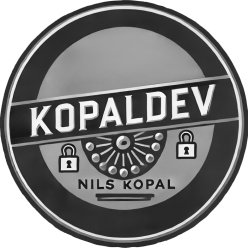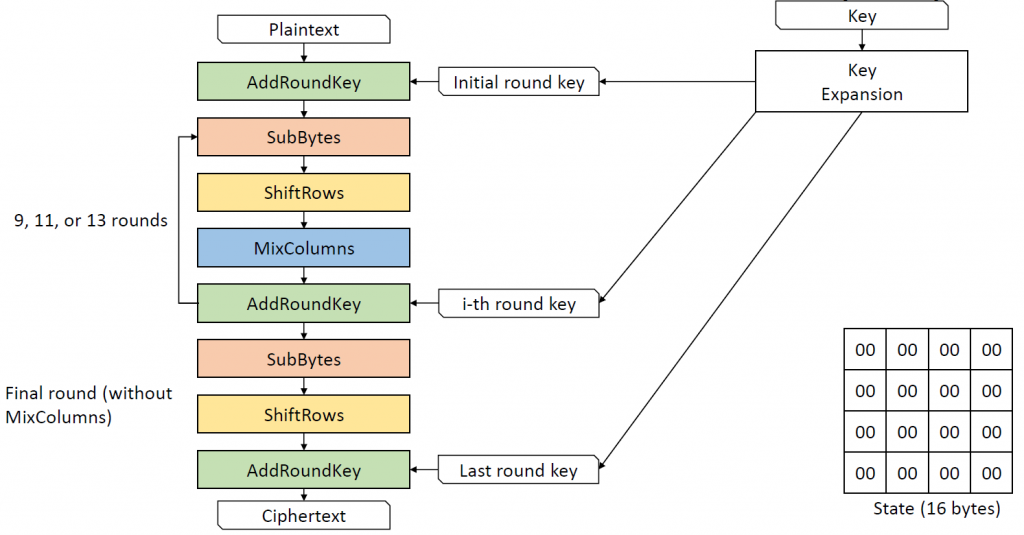Recently, I created the “TextAES”, an AES-like cipher, where each building block of the original AES was replaced by a classical cipher. Of course, I also made a video about that and uploaded it onto my YouTube channel 🙂
After getting some feedback on my corresponding blog article here, I created the ASCII Enigma. An Enigma machine with 256-pin rotors. The basic idea was to create an Enigma machine that resembles the original design, but allows the encryption of more then the standard 26 Latin characters.
Three new Enigmas
In total, I developed three different new Enigmas and programmed these in C#: the Morse Enigma, the Enigma64, and the ASCII Enigma.
The Morse Enigma allows the encryption of more than 26 letters, but it still only uses symbols, that can be sent using Morse code. The main idea was, that this machine could have been built in the 1940s and Morse code was the state-of-the-art transmission media for messages. This Enigma machine has rotors with 38 pins. It allows the encryption of the letters A-Z, digits 0-9, and four special characters ( . , ! ? ).
The next Enima is the Enigma64. It allows the encryption of uppercase letters A-Z, lowercase letters a-z, digits 0-9, and two special characters ( . , ). My idea here is, that the created ciphertexts can still be represented using printable characters. By replacing . and , with / and +, the machine could easily by converted to a “Base64 Enigma”.
The last and most powerful Enigma I created is the ASCII Enigma. It allows the encryption of all 256 ASCII symbols. Since a lot of these are not printable, the resulting ciphertexts should be either converted to Base64, Hex values, or just stored in a binary file.
The C# Code
My C# code does not only allow to create these “fantasy” Enigmas, but also to create original Enigmas. I implemented the Enigma 1 for testing my code. Finally, one can also create Enigmas with only 1 or even 1,000 rotors. It can be easily done using only a few C# statements. Below you see how to create an Enigma 1:
int[] key = new int[] { 0, 1, 2 }; // A B C <--> we work on numbers instead of letters
//create plugboard with three plugs
int[][] plugs = new int[3][];
plugs[0] = new int[] { 0, 1 }; // plug A <-> B
plugs[1] = new int[] { 2, 3 }; // plug C <-> D
plugs[2] = new int[] { 4, 5 }; // plug E <-> F
//create rotors for machine
Rotor rotor1 = new Rotor(MapTextIntoNumberSpace(Enigma1.RotorI, Alphabets.Alphabet26), Enigma1.RotorINotches, 0);
Rotor rotor2 = new Rotor(MapTextIntoNumberSpace(Enigma1.RotorII, Alphabets.Alphabet26), Enigma1.RotorIINotches, 0);
Rotor rotor3 = new Rotor(MapTextIntoNumberSpace(Enigma1.RotorIII, Alphabets.Alphabet26), Enigma1.RotorIIINotches, 0);
Rotor reflector = new Rotor(MapTextIntoNumberSpace(Enigma1.UKWA, Alphabets.Alphabet26), null, 0);
//create machine
RotorMachine enigma1 = new RotorMachine(new Rotor[] { rotor1, rotor2, rotor3 }, reflector, new Plugboard(Alphabets.Alphabet26, plugs), Alphabets.Alphabet26);
//reset machine key
enigma1.Key = key;
//plaintext:
string text = "HELLOXWORLDXTHISXISXAXTESTXTEXT";
Console.WriteLine(text);
//encrypt/decrypt and print all to console
int[] plaintext = MapTextIntoNumberSpace(text, Alphabets.Alphabet26);
int[] ciphertext = enigma1.CryptText(plaintext);
Console.WriteLine(MapNumbersIntoTextSpace(ciphertext, Alphabets.Alphabet26));
//reset machine key
enigma1.Key = key;
int[] decrypted = enigma1.CryptText(ciphertext);
Console.WriteLine(MapNumbersIntoTextSpace(decrypted, Alphabets.Alphabet26));Here, we create an Enigma 1 with three rotors (I, II, III), a plugboard, and the reflector UKWA. My implementation does not take the “rings” into account since these are cryptographically irrelevant. And it eased the code :-). If you want to have an implemention of the Enigma with rings, have a look at CrypTool 2.
My YouTube Video and the Source Code
Of couse, I also made a video about the ASCII Enigma:
If you are interested in getting your hands on the source code, I created a GitHub project where you can get it from: https://github.com/n1k0m0/ASCIIEnigma

